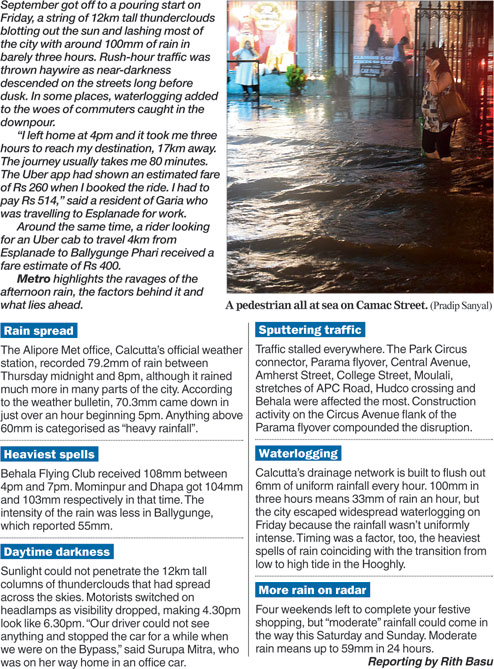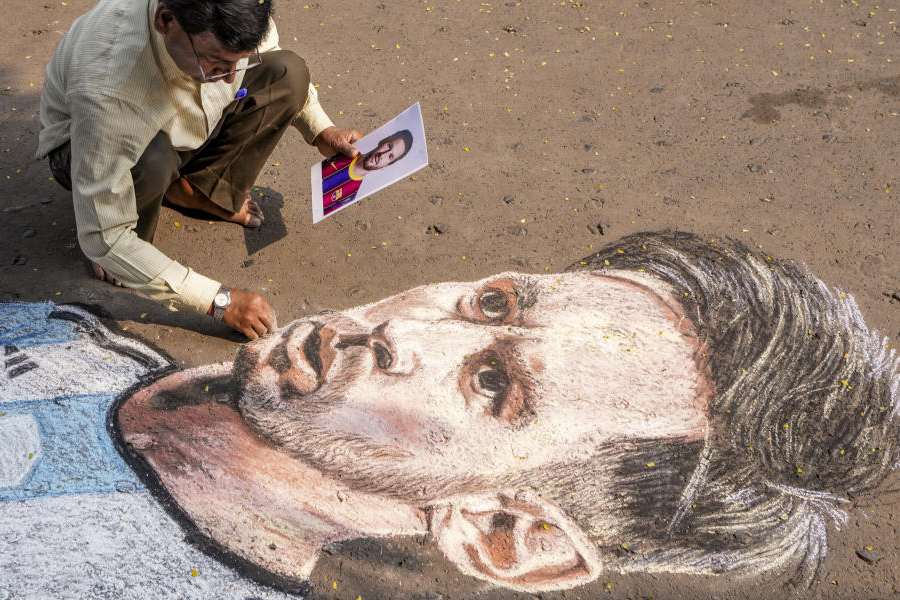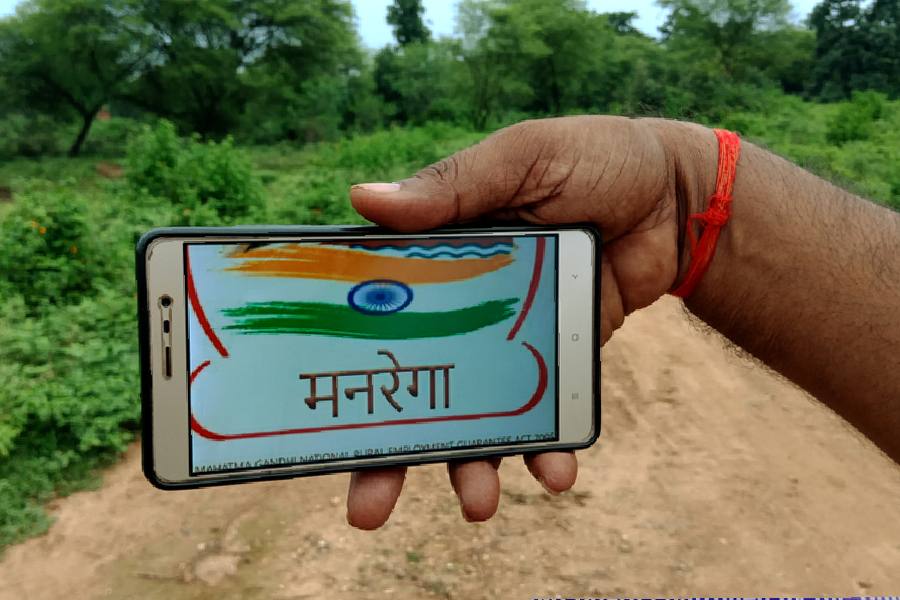HIGH ON THE HOOGHLY

A 13ft high tidal bore triggered by a rare confluence of celestial phenomena sunk a jetty and overturned boats anchored on the Hooghly while the rest of the city was either sleeping or partying last weekend.
Frenchman Antony Colas and three other foreign surfers rode the tidal bore during daytime on either side of the big splash at 12.30am on March 22 but veteran boatman Mohammed Tazuddin didn't know what hit him.
Tazuddin, who had been asleep in his boat as the tidal bore gathered momentum, was tossed into the water along with two other boatmen when the biggest wave lashed the shore past midnight. One of the men has been missing since.
'I had never seen such an angry incarnation of a baan. The roar of the wave and its height left me rattled like never before,' Tazuddin, 60, recounted.
 Colas, who chases tidal bores across continents for the thrill of it, promptly upgraded his ranking of the Hooghly wave to the 'third most ferocious' in the world. It was the Frenchman's second visit to Calcutta to surf in the river during a tidal bore and he had been expecting something big and intimidating this time.
Colas, who chases tidal bores across continents for the thrill of it, promptly upgraded his ranking of the Hooghly wave to the 'third most ferocious' in the world. It was the Frenchman's second visit to Calcutta to surf in the river during a tidal bore and he had been expecting something big and intimidating this time.'It was rough out there. I would rank this tidal bore third behind the Chao on the Qiantang in China and the Porroroca on the Amazon in Brazil,' said Colas, who faced the challenge along with a surfer each from Australia, Brazil and Japan.
Metro had highlighted Colas's previous visit in August 2014 with fellow Frenchman Gaetan Sene and Briton Steve Hunt. On that occasion, he had ranked the Hooghly tidal bore fourth behind the ones in China, Brazil and Indonesia (see chart).
According to astronomers, tidal bores occur twice a day during high tide around full moon and new moon nights. The one last week had been expected because March 20 was a new moon night. What made it unusual was the combination of three other factors.
March 21 witnessed together a lunar perigee, when the moon is closest to the earth; a total solar eclipse, when the earth, sun and moon are in a straight line; and a spring equinox, when the sun is closest to the equator.
'It's very rare for so many factors favourable to strong currents in the oceans and seas to come together. These currents lead to tidal bores in the connecting rivers. That's why the waters swelled as much as they did in the Hooghly,' said Kaustuv Chaudhuri, secretary-general of the Calcutta Astronomy Centre.
Tidal-bore waves are generally larger around a new moon night when the sun is on the same side of the earth. 'Tides are generated by the gravitational pull of primarily the moon but the sun is also at play. That's why the biggest tidal bores happen around the time when the sun and moon are collinear. The effect of the sun's pull is 47 per cent that of the moon,' said Debiprosad Duari, director (research and academic) at the MP Birla Planetarium.
The total solar eclipse on March 21 was seen from the north waters of the Atlantic. The eclipse was partial in many places across the UK and the US, when the moon came between the earth and the sun to form an absolutely straight line, which doesn't happen on every full moon night. 'Since they were in a straight line, the distance between them was also the least possible. That's why the combined gravitational pull was so strong,' Chaudhuri said.
The phenomenon called lunar perigee occurred a few hours before the solar eclipse. On an average, the moon is at a distance of about 384,500km from the earth. The distance comes down to 363,396km when a lunar perigee occurs, increasing the moon's gravitational pull.
Sugata Hazra, director of the School of Oceanographic Studies at Jadavpur University, said one of the reasons for the tidal bore becoming so big was the low water level of the Hooghly being no match for the surge from the sea.
The rumble of the tidal bore even snapped the iron chains that secure the pontoon on which the jetty at Shibpur ferry ghat rests. The anchors were uprooted and the structure wrenched away even as the gangway fell face first into the waters.
The pontoon was found next morning near the Howrah ferry ghat, where it was later tethered to the bank. Other jetties, including Bauriya, suffered damage too.
'We knew the baan would come but didn't expect it to be so strong. The bore passed and after a while a mass of debris crashed into my boat while I was asleep,' said Tazuddin, from Darbhanga in Bihar.
TALE OF A TIDE

Fear was still writ large on his face as he recalled his struggle to swim ashore.
Mohammed Abu, who was with him in the same boat, has yet to be traced. The third person to be tossed into the waters had been sleeping in another of the seven boats anchored there.
Tazuddin said in all these years of living by the Hooghly he had never before seen “a mountain of debris that large” floating on the river after the passing of a baan.
Boatman Mohammad Zakir, 65, and Shyamal Nath, maintenance-in-charge of the Hooghly Nadi Jalpath Paribahan Samabay, said the tidal bore was by far the tallest they had seen.
E. Islam, director of the Birla Industrial and Technological Museum, said the channels of the Hooghly were interlinked near the Sunderbans and a forceful tide racing down the river could easily cause debris from there to pile up and form a dangerous mass.
Have you seen a tidal bore on the Hooghly? Tell ttmetro@abpmail.com










